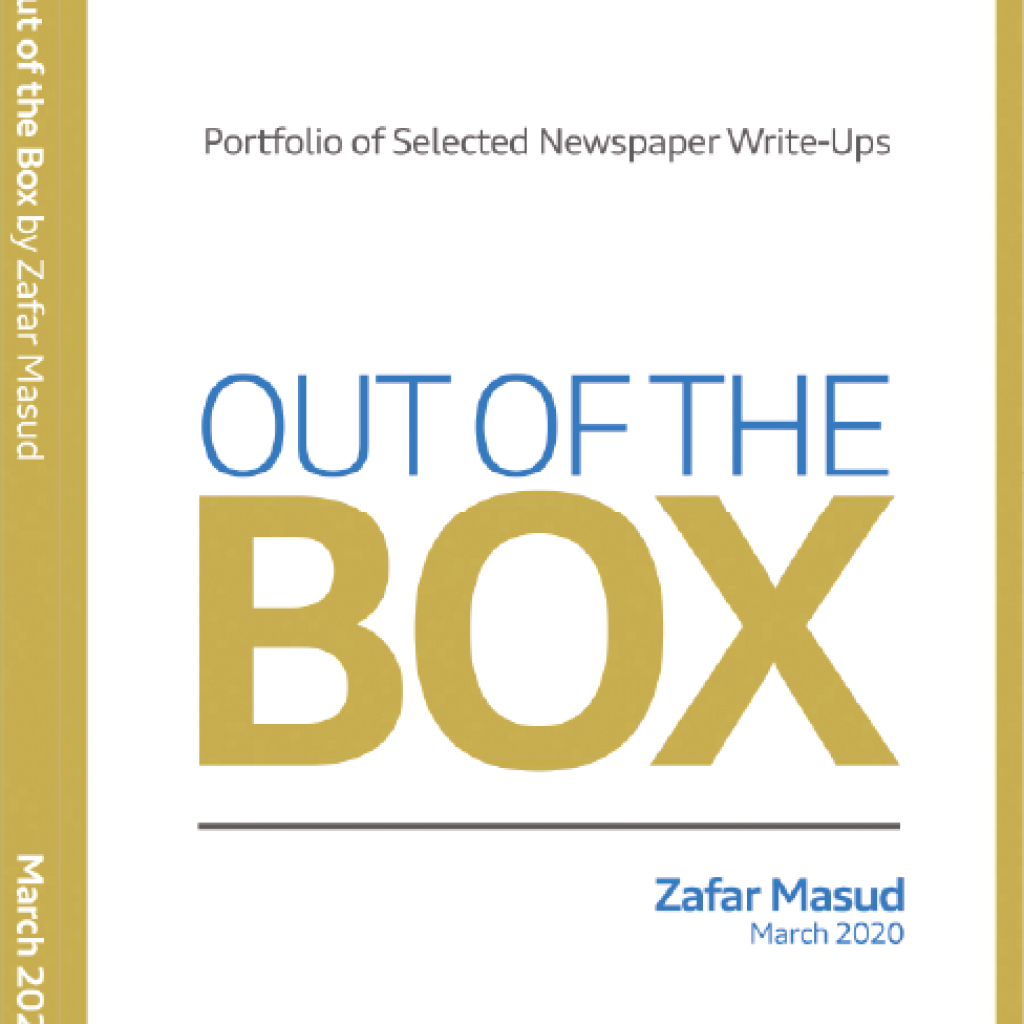Perception is often more important than reality. The fact is that it’s the perception which is based on reality and it’s actually the reality which becomes a perception as in the case of Pakistan’s credit risk. There has been a constant debate about Pakistan’s credit risk lately and all sorts of theories and analyses have been volunteered to make a case that the credit risk of Pakistan has been deteriorating for the last few years based on one pretext or the other – starting from abnormally high debt levels to GDP growth not being the best judge of economic progress, etc. There has been an attempt to create a perception that as if Pakistan’s credit risk is very high and deteriorating. This has been an extremely unfortunate endeavor on the part of a group of local economists and politicians, whilst the rest of the world is perceiving Pakistan in a very different light – the improvement in the risk rating of Pakistan by both Moody’s and S&P in the last three years is an obvious evidence. Further, in the long run, there’s improvement in political risk projected as researched by BMI. There’s clearly economic recovery underway.
Let’s look at some facts based on which the global best brains in business and economy have made their “perception and optimism” about Pakistan risk. While there has been a growing debate about the effectiveness of GDP Growth to gauge the economic development; the fact is that this is considered to be one of the most authentic source to measure the economic progress. Pakistan has done startlingly-well on this front vis-à-vis the past growth rates and the averages of global and middle-income economies growth.
The world economies have been getting more and more integrated over the past few years and the case of Pakistan is no different. The argument doesn’t just end here, the dilemma that the world is facing is very interesting and double whammy – not only weak economic / GDP growth, but also little deleveraging or in other words debt accumulation for all the wrong reasons. The case of Pakistan, however, is very different in two respects in this context – debt used for productive reasons (hence, the GDP Growth) and reduction of FX portion in the overall debt (improvement in the default risk). Debt utilized for infrastructure development start bearing fruits and contribute towards the economic benefits with the lag; therefore, immediate growth in GDP of Pakistan is commendable. The constant improvement in the external and internal debt mix has also contributed towards the improvement in the risk profile of Pakistan as the risk of default in case of sovereign is always driven from the weaknesses in the external accounts and servicing on its FX obligations.
The fact is that Pakistan’s FX Reserves have been built based on real FX flows; not thru borrowings, something that has been misrepresented and hammered into the minds of general masses by our theorist/ academic economists. This is clearly reflected that if the scheduled maturities of the past FX debt is taken into account then the net addition of marginal debt acquired during the period into FX Reserves is actually “negative” by a large number/ margin. Additionally, let’s also see where does things stand without accounting for the scheduled FX obligations/ debt maturities. Import coverage has been enhanced from 119 days to 204 days – a 1.7x enhancement. This by no means is a small feat. Similar is the situation on the coverage of external debt and liabilities which doubled in the last three years. This is also the reason why our currency remained strong and our external account remained comfortable.
There’s also an argument that with the exit of IMF, there maybe a pressure on the external account, particularly in the light of subdued exports and stagnant remittances. The FDI is suffering across the emerging markets in any case and Pakistan is no different but it’s still doing better than emerging markets. The fact also is that these reserves had been accumulated to bridge any need that may arise to keep the situation on external account comfortable. The outlook for the next 3/4 years based on the shock-absorbers is comfortable; however, in the meantime, the reforms are inevitable especially in the areas of exports (particularly textiles) which are all under private sector. The Government has addressed the legitimate demand of exports by rolling out the $1.8bn relief package and now it’s upto the exporters to focus on the ways to capitalize on it. The situation on exports front can only be arrested through the combined efforts of both Public and Private Sectors. The FDI across emerging markets is suffering and there has actually been exodus of investment flows; however, Pakistan’s FDI flows, albeit weak, having been positive which indeed is a cause of consolation. The further good news is that Pakistan’s net international investment position is relatively minor at 28.6% of GDP, compared to region’s average of 33.7%, which suggests that the risks of a balance of payments crisis are much lower, than the other countries in the region.
Further, on the portfolio investment front, PSX, being one of the best performing stock markets in the world, upgradation in the MSCI index is expected to attract over USD 1.5bn incremental investment over the next 6-months or so, according to the market experts, once these uncertainties on the political front settles down.
Pakistan’s current account has recently flipped into deficit, after being in brief surplus in fiscal year 2015/16, which was another contributor to the foreign exchange reserves. The reason is that surging financial account inflows, in part driven by the China-Pakistan Economic Corridor (“CPEC“), have enabled a sharp rise in non-oil imports, and that also predominantly machinery. This is probably the best news that has come out of the whole discussion on the external account. This is a capital expense which may create some stress (and debt accumulation) in the short run but in the medium to long term, for certain, this development will only help achieve sustainable economic growth. We, as a nation, need to be patient and await for the far-reaching benefits of the development/ policy decisions which will only show up over a period of time but it’s not too far in sight.
Based on the above developments, Pakistan’s risk premium declines as the economy expands, and over the last five years, the Country risk almost halved – down from over 15% to less than 8% now and improving.
While there maybe ups and downs on the external account and debt to GDP ratio; however, the outlook is very positive, and that has been recognized across the globe for all the right reasons, as the existing economic policies of the Government are for the future and driven from the need for the medium to long term prosperity and sustainable economic growth for the years to come as argued through the data in this write-up.
This hypothesis has been reinforced/ endorsed by the most recent analysis by PwC. In it’s report: “The Long View: How will the global economic order change by 2050?”, based on the GDP at PPP, Pakistan’s ranking is projected to improve from 24th number now to 20th and 16th, in 2030 and 2050, respectively. That’s what the “reality” about the Pakistan credit risk.


Out of the Box
Portfolio of Selected Newspaper Write-Ups
2014 — 2020
Subscribe and get a free digital copy of Zafar Masud's original and unedited newspaper write-ups since 2014.
